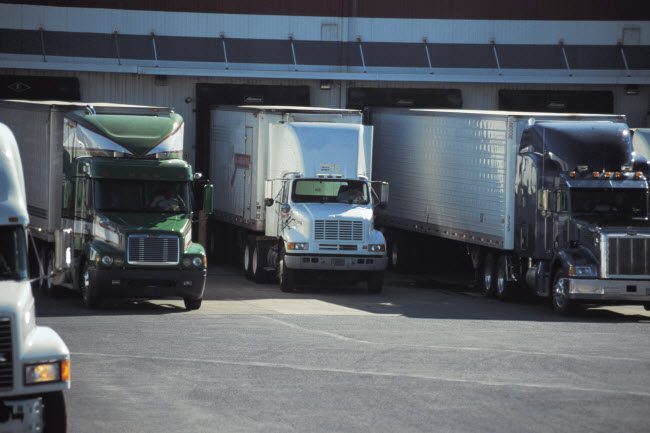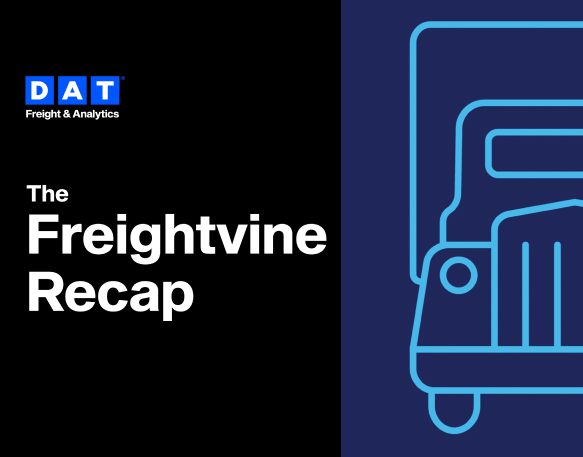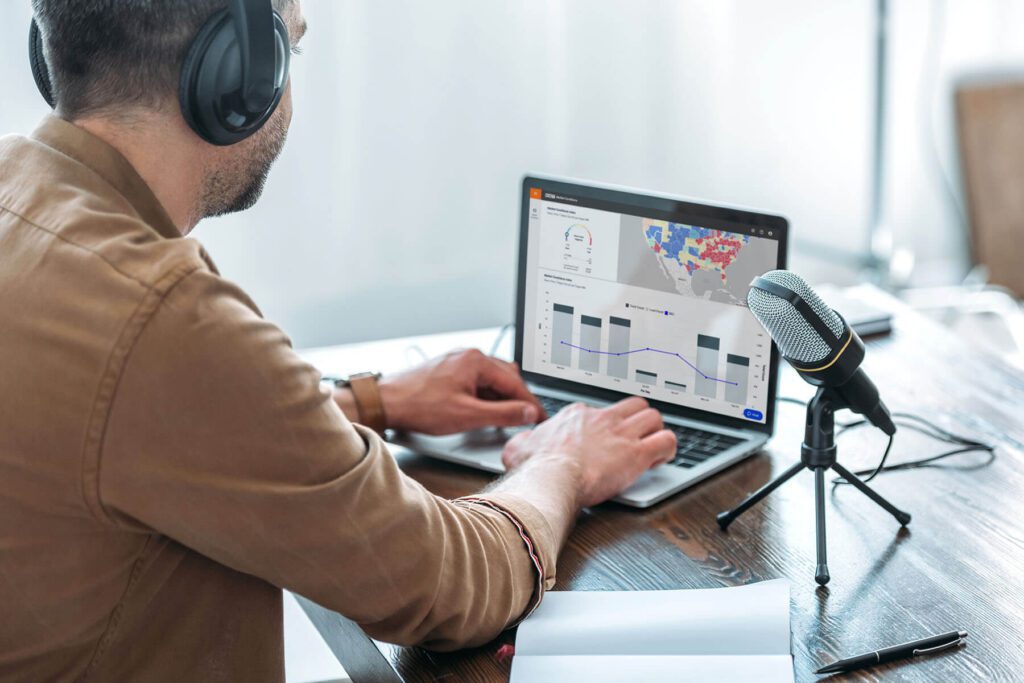In an episode of DAT’s Freightvine podcast, Kelson Hardwick, Director of Transportation Procurement at Walmart, explains the ways that technology and data accessibility have transformed operations at the retail giant.
The increased availability of technology and real-time data has the potential to radically impact how the shipping and logistics industry approaches transportation procurement. Some companies are still struggling to embrace the transformative power of these developments. However, a few leaders are coming out ahead thanks to their willingness to adopt new strategies and transportation procurement best practices that make the most of the latest technologies.
DAT Chief Scientist Chris Caplice recently spoke with Kelson Hardwick, Director of Transportation Procurement at Walmart. They discuss what it’s like to procure transportation services for a massive retail giant and how increasing data accessibility have helped transform the company’s procurement strategies. Hardwick also discussed the impacts of the COVID-19 crisis on Walmart’s operations and on the industry as a whole as it grapples with updating practices that have been in place for decades.
Listen to the full podcast or read a quick recap of the conversation below.
What Is Transport Procurement?
Transportation procurement describes the process in which businesses attain transport for shipping goods from one location to another. This means finding the right carriers to transport loads safely and efficiently. Given that transportation is such a major expense, procurement costs can often mean the difference between profit and loss for a company. This makes it a critically important process no matter the geographical scope or operational size of a business.

Transportation procurement managers regularly solve complex problems to help get shipments delivered on time and at reasonable costs. With the advent of new technologies that offer accurate and near real-time rate and market data, some transportation procurement managers — like those at Walmart — are beginning to rethink the old ways of doing business. That includes shifting away from the standard of operating around a single annual bid and moving to incorporate more frequent small bids or “mini bids.” This approach helps ensure companies aren’t overpaying for their transport and instead are paying costs that reflect the current market rates at the time of the shipment.
Download our eBook, “Maximize Your Mini-Bid.”
Adopting Continuous Transportation Procurement
When Kelson Hardwick first joined the transportation procurement team at Walmart in 2014, the company was following a standard procurement cycle that Hardwick describes as “network, annual bid, rinse, repeat.” In the years since he took on his role as Director of Transportation Procurement, Hardwick has helped the company evolve its procurement strategy away from the single annual bid model. Walmart first moved to more frequent monthly bids and then to its current state of continuous transportation procurement.
With the traditional annual bid approach, so much time went into developing a bid that by the time the team was ready to implement it, many of the aspects of that bid were already wrong or outdated. That could make the rates in the bid too high or too low for the current market rates. It took a long time for Walmart and its peers to move away from this approach to procurement, in part because of a lack of technology and data accessibility. Also, many people in the industry feared moving away from the old standard.
But in 2018, Walmart’s transportation procurement team realized it was time for a change — even if many in the industry weren’t yet ready to follow in their footsteps. They began what Hardwick describes as Walmart’s “first foray” into the continuous transportation procurement process with the introduction of monthly bids. Today, the team has gone from one bid per month to getting bids out almost weekly. Since the launch of monthly bids, Hardwick saw Walmart’s transportation procurement strategy evolve more in two years than it had in the entire decade previously.
Hardwick attributes much of this success to the technology and data accessibility, which have enabled transportation procurement managers to find the carriers they need. The best way to succeed when navigating a continuous bidding process is by having tools that help you stay within your budget and make the most of evolving rates from day to day.
Fortunately, these tools are now readily available, thanks to platforms like DAT iQ.
Embracing Continuous Change in the Transportation Procurement Process
When it comes to technology adoption, Walmart has been ahead of the curve for the last two years. Hardwick’s openness to ongoing change and progress is one of the reasons why the company’s transportation procurement strategy has been developing so successfully.
“We’re never settled with our strategy,” said Hardwick. “It is constantly evolving.”
That openness to change and willingness to be flexible in evolving markets is one of the reasons for Walmart’s ongoing success. And, in these unprecedented times, it has enabled the company to adapt to the challenges brought on by the COVID-19 pandemic.
Unlike many of its competitors, Walmart was in a strong position when the pandemic hit. Not only did the company have a history of innovation, but its procurement team already appreciated the value of being nimble in their strategies and initiatives. That gave them the flexibility to begin adapting to the new circumstances quickly and maintain their continuous transportation procurement strategy while meeting the new needs of the COVID era.
Looking to the Future with the Aid of Technology
For Walmart, modern technology and access to accurate and near real-time rate and market data has helped transform an outdated transportation procurement process into the continuous procurement strategy we see today. This has helped the company achieve new levels of success and weather the many challenges of the COVID-19 pandemic.
Organizations looking to follow in Hardwick’s footsteps and improve their procurement strategies should consider embracing a technology-forward, hybrid approach. By incorporating tools like DAT iQ, companies can build a greater understanding of current market data and rates as well as other data-centric information that has been a centerpiece of transportation procurement strategies for years.


